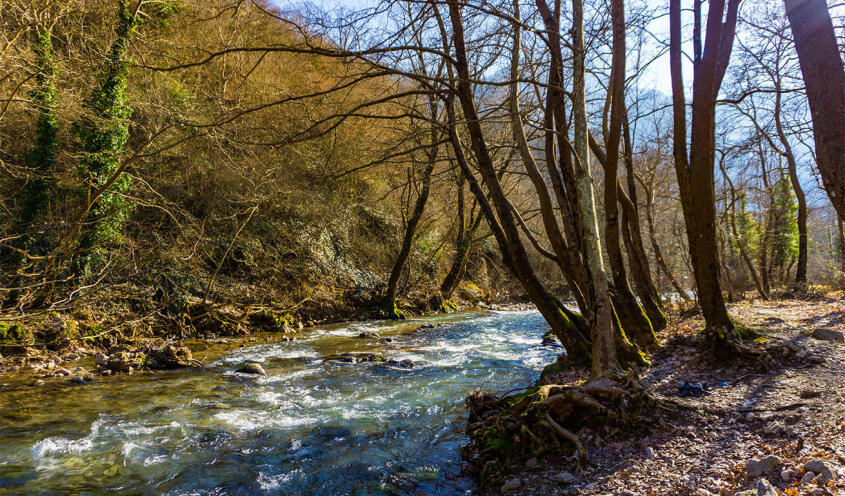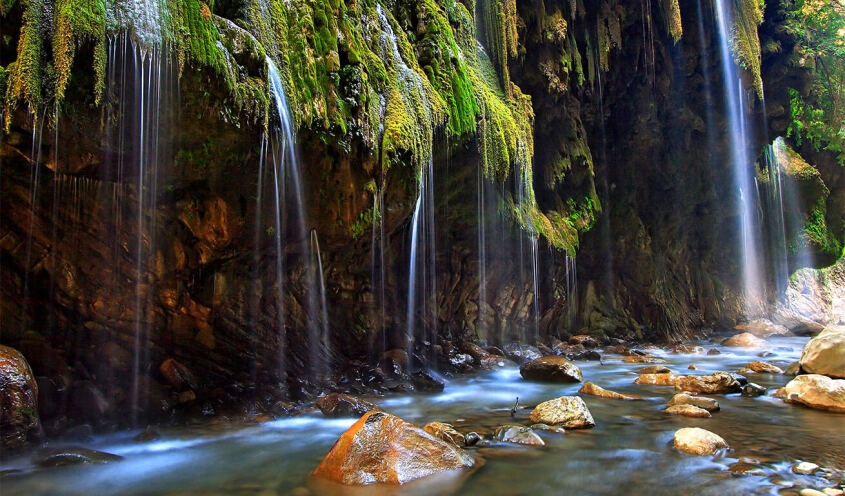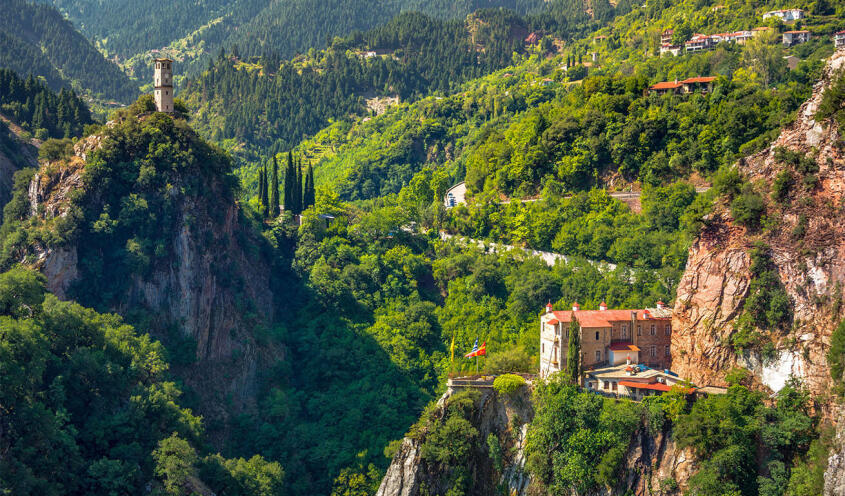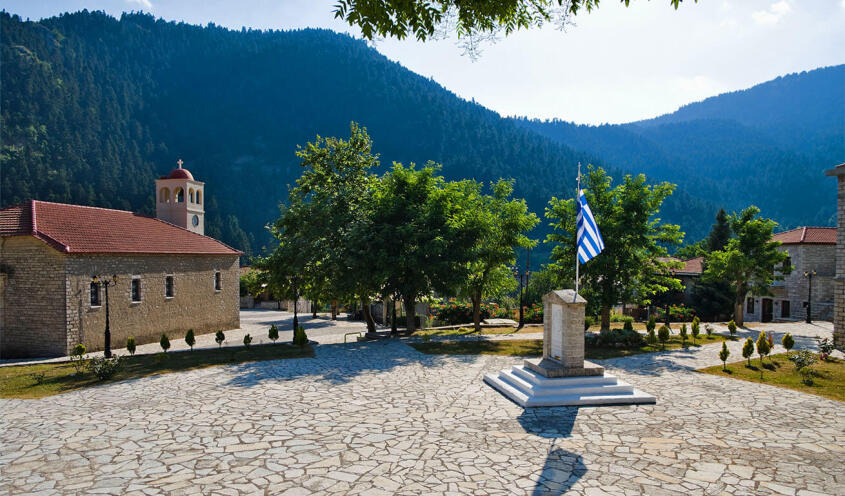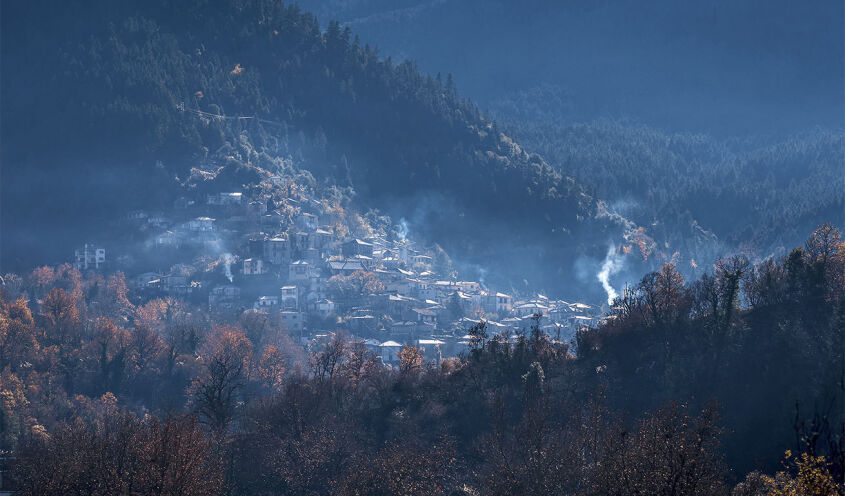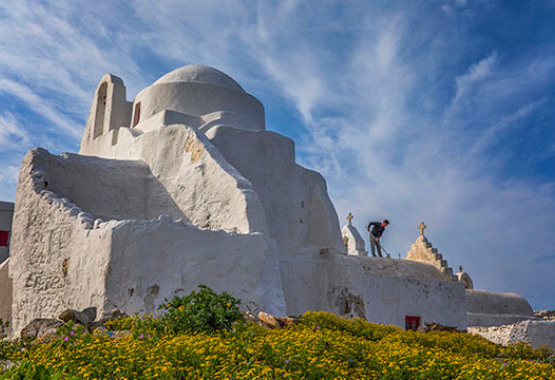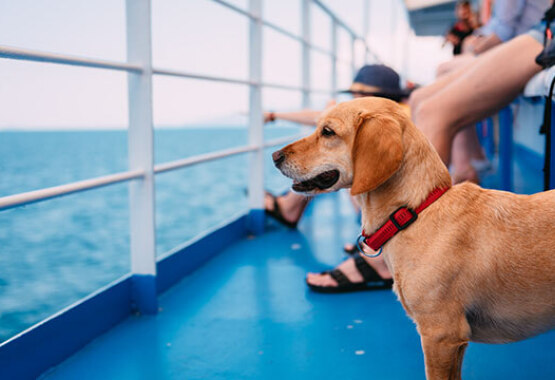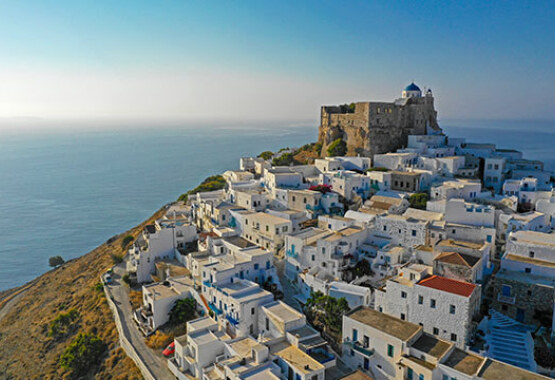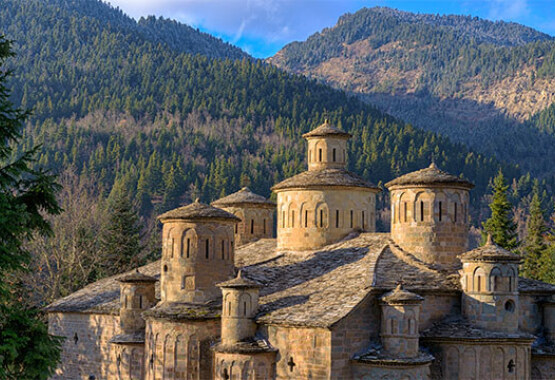
The villages of Evritania
The most famous place in Evritania is undoubtedly its picturesque, stone-built capital of Karpenisi on the slopes of Timfristos (Velouchi), about a three-hour drive from Athens. However, Evritania also includes many small, spellbinding villages, which seem to hover on the slopes of Mount Helidona, offering breathtaking views, traditional food and stunning scenery. The area also has a poignant past, with many stories recounting the exploits of the fighters of the Greek Revolution who took refuge in the small mountainous villages to flee the Ottoman occupation, and of the guerrillas who hid in the mountains while fighting the Italian army during World War II. Travelers seeking a relaxing getaway in Evritania and a close-up look of the fairy tale-like Pantavrechei, Lake Kremasta or the Mavri Spilia gorge can use any of the following beautiful villages as a base.Old and New Mikro Chorio (Small Village)
The beautiful village of Mikro Chorio (small village) is considered among the most historic places in Greece. Divided into two settlements - the Palaio (old) and the Neo (new) Mikro Horio, it is nestled in a thick fir forest at an altitude of 950 metres on the slopes of Mount Helidona. Mikro Chorio lies opposite of Megalo (large) Chorio, which is another well-known traditional settlement of Evritania. It is said that the body of Greek Revolution hero Markos Botsaris was transported here after the battle of Kefalovrysos, so it could be washed and prepared for burial. The village also played a major role during World War II. More specifically, during the Nazi occupation Mikro Chorio was where the printing house of the Resistance operated, while on December 18, 1942, Aris Velouchiotis and his men faced about 2,000 Italians on the mountain in a battle that came to be known as “The Battle of Mikro Chorio.” The Italians suffered heavy losses after their regiment’s vanguard was ambushed by the guerrillas. The region’s history was also marked by a landslide on January 13th, 1963 leading to the death of 13 villagers. This natural disaster was to play a pivotal role in the regions’ future course. As it occurred on a Sunday, most of the residents were in the church and thus escaped certain death. A year later those who lost their homes moved to the Neo (new) Mikro Chorio, 2.5km away, built by the Doxiadis technical office.
Megalo Chorio (Large Village)
This charming settlement surrounded by tall oak, chestnut and dogwood trees is situated opposite Mikro Chorio. Sitting on the slopes of Mount Kaliakouda, lush Megalo Chorio, 17 km from Karpenisi, is characterized by an imposing plane tree in its central square providing shade. It also hosts the Historical and Folklore Museum with folk art displays and ecclesiastical relics. The entrance to the village is dominated by the bust of the 17-year-old heroine of the Resistance, Panagiota Stathopoulou, who lost her life during the Iouliana events of 1943. According to the historical records, this wealthy village graced with stately buildings and cobbled streets was also a meeting point for the main protagonists of the Greek Resistance during World War II. The village has picturesque cafes and taverns with good traditional food, as well as the best view of the valley of the River Karpenisioti.
Koryschades
Arguably one of the most beautiful villages in the area, Koryschades seems to hover on the edge of a slope. Located just five km from Karpenisi, this small village of 44 permanent residents was called Kypseli until 1965. Today it is renowned as a symbol of the National Resistance against the Germans during World War II as it was here in 1944, after the secret national elections were held, that the National Council of Greece met with representatives from almost all regions of the country. The building which hosted the meetings of the members of the National Council, houses the National Resistance Museum whose unique displays recount this period of the area's history. The small central square is an ideal place to sip a coffee under the tall trees, while relaxing and gazing at the magnificent view from an altitude of 940 meters.
Prousos
Prousos is among the most famous villages of Evritania. It is located on the southwestern border of the prefecture of Etoloakarnania, 29 km from Karpenisi and north of Lake Trichonida. It attracts visitors all year round from various parts of Greece, due to the monastery of Panagia Prousiotissa, about 30 kilometers from Koryschades. Scholars have concluded that the monastery has probably been situated at the same spot since the 12th century. An important attraction of the village is a rock on a path called Patima tis Panagias (the step of the Virgin Mary), which has seven marks of different colors that look like footprints. This historic village is also dominated by the impressive gorge of Mavri Spilia (black cave) and its magnificent 10-metre-high waterfall. The gorge took its name from the cave there of the same name, which holds a special place in the area’s history, as it served as a refuge of the persecuted inhabitants of Evritania, both during the years of the Greek Revolution and during the German Occupation.
Fidakia (small snakes)
Fidakia, which means small snakes in Greek, is perhaps the most beautiful village of Evritania from an architectural point of view due to its famous characteristic stone houses. It also stands out among all the other traditional settlements of the area due to its picturesque cobbled alleys and a peculiar serpentine layout which gave the village its name. The village has been declared a traditional settlement and sits at an altitude of 920 metres on Mount Helidona. Archeological excavations at the highest point of the settlement have revealed the ruins of what is believed to be ancient Oichalia, the capital of Evritania. The view of Lake Kremasta from here is indeed breathtaking.
Voutiro (butter)
According to local lore, this village was named Voutiro because a local producer used to make fresh butter (voutiro) here. The small village is built in an amphitheatrical shape on the west bank of the River Karpenissiotis, on the northeast side of Mount Helidona. Voutiro is known for its splendid traditional churches and the largest one in all of Evritania, Agia Paraskevi, which was built in 1926. It dominates the main square of the village overlooking the valley of Potamia. The picturesque chapel of Agios Ioannis on the east side of the settlement is also worth seeing. The village, eight km from Karpenisi, is the ideal place for wildlife lovers to start their exploration, as the area to the northwest has been designated as a permanent Wildlife Refuge.
Tornos
Located in a verdant valley some 35 km from Karpenisi, Tornos is one of the most interesting villages of Evritania. It is a small settlement of only 144 permanent residents and is famous for the very good wine produced in its vineyards, but also for the marked paths that start from here and help you explore the heart of the forest. A stop at the Folklore Museum of the village or a visit to the church of the Agia Triada are also worthwhile. According to the most prevailing theory, the name of the village is derived from the adjective “torneutos” (lathed) implying something "beautifully made".
